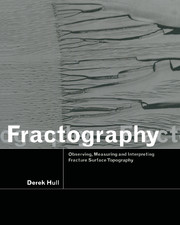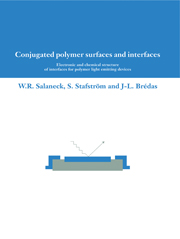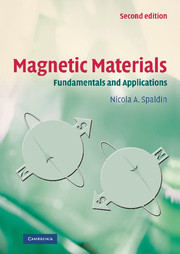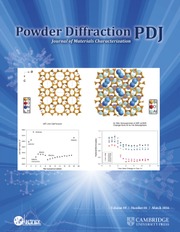Fractography
Observing, Measuring and Interpreting Fracture Surface Topography
- Author: Derek Hull, University of Liverpool
- Date Published: November 1999
- availability: Unavailable - out of print January 2020
- format: Paperback
- isbn: 9780521646840
Paperback
Looking for an examination copy?
This title is not currently available for examination. However, if you are interested in the title for your course we can consider offering an examination copy. To register your interest please contact [email protected] providing details of the course you are teaching.
-
Fracture surfaces are produced when a solid breaks. The appearance of the surface, particularly the topography, depends on both the type of material broken and the conditions under which it was broken, such as stress, temperature, or environment. Fractography describes the ways of studying these surfaces. Coverage includes all the information needed to understand the deformation and fracture in all types of solids and to interpret the topographical features in terms of the microstructure and the way it was tested. It also provides details on how to design clear and unambiguous experiments that involve many aspects of fracture in a wide range of solids. This book is an invaluable resource for undergraduate and graduate students, as well as researchers, industrial scientists, engineers, and anyone with an interest in materials science.
Read more- Author famous throughout the world for his materials science textbooks
- Nothing else like this exists
- Wide potential readership from materials science, physics, chemistry, and earth science
Reviews & endorsements
"This book is an attractive one containing nice fractographs and clear illustrations....It is well organized and covers the very basic fundamentals working up to a very detailed and concise description of the mechanisms in play and the evolution of the fracture morphology...an excellent reference for those working in brittle materials and should be added to the other cornerstone books in the field."
Applied Mechanics ReviewsSee more reviewsDerek Hull expounds these components of fractography with great skill and authority. He gives equal weight to the experimental techniques and to the interpretive principles, and interweaves them so that he achieves remarkable integrity and narrative flow. Every page reveals first-hand experience. The illustrations are exemplary, and beautifully reproduced … Lectures based on the book should engage the enthusiastic attention of every student of materials science, whether a graduate student or not... By virtue of its elegant exposition, and the integrity of its point of view, I believe that wherever fracture, fast or slow, of whatever material, is a topic of interest, Hull's book will be an essential reference. and many scientists will be pleased to display it on their coffee-tables, alongside other equally elegant but much less profound works. It is a classic.
Contemporary PhysicsCustomer reviews
Not yet reviewed
Be the first to review
Review was not posted due to profanity
×Product details
- Date Published: November 1999
- format: Paperback
- isbn: 9780521646840
- length: 386 pages
- dimensions: 254 x 203 x 20 mm
- weight: 0.915kg
- contains: 565 b/w illus.
- availability: Unavailable - out of print January 2020
Table of Contents
1. Introduction to the concepts used in the observation, measurement and interpretation of fracture surface topography
2. Observing, describing and measuring fracture surface topography: some basics using Ketton stone as an example
3. Tilting cracks
4. River line patterns
5. Mirror, mist and hackle: surface roughness, crack velocity and dynamic stress intensity
6. Cleavage of crystalline solids
7. Fracture at interfaces
8. Aspects of ductile fracture
9. Crack dynamic effects
10. Applications of fractography
Appendix.
Sorry, this resource is locked
Please register or sign in to request access. If you are having problems accessing these resources please email [email protected]
Register Sign in» Proceed
You are now leaving the Cambridge University Press website. Your eBook purchase and download will be completed by our partner www.ebooks.com. Please see the permission section of the www.ebooks.com catalogue page for details of the print & copy limits on our eBooks.
Continue ×Are you sure you want to delete your account?
This cannot be undone.
Thank you for your feedback which will help us improve our service.
If you requested a response, we will make sure to get back to you shortly.
×








